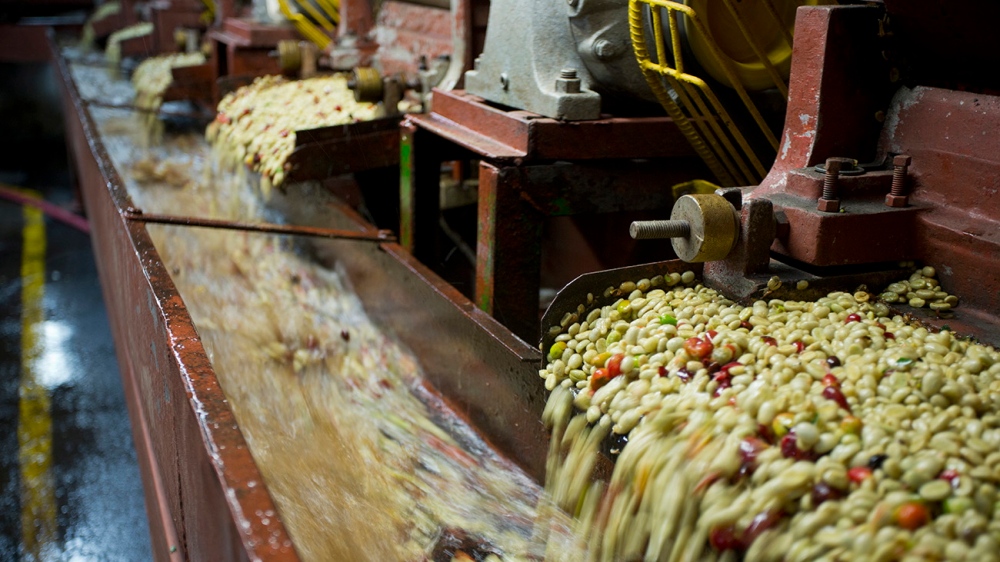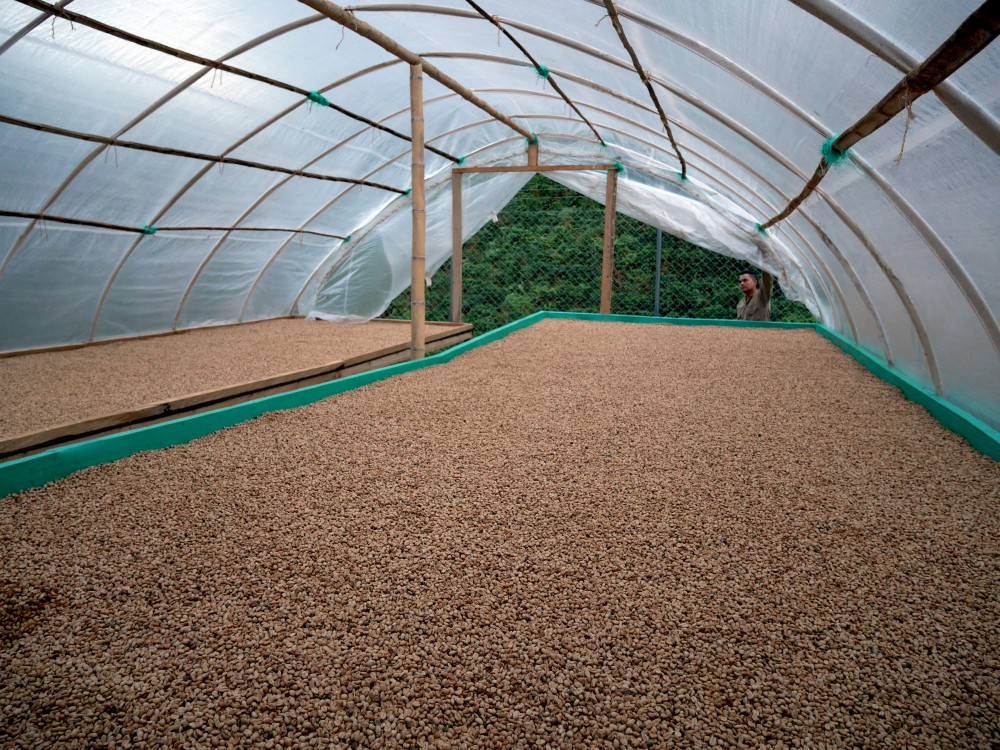Finca Veracruz
The method of processing a coffee affects its overall flavour. From the sweet, fruity tones of a natural processed coffees, to the bright, complex character of a fully washed coffee, much of what we enjoy from our coffee has been influenced at the farm or mill.
The processing method used at Finca Veracruz builds on the fully washed process. The coffee is de-pulped (see image below) in exactly the same way as the traditional washed process but is then subjected to an extended fermentation stage.

Each Veracruz lot is comprised of between 3 to 5 days’ picking. Each day, pulped beans are added to a fermentation tank with the previous days’ pickings. In this method of ‘extended’ fermentation (image below), each consecutive batch raises the ph level (i.e. makes it more alkaline) of the fermentation tank, permitting longer fermentation times that will produce a fruit-forward cup but without the acetic acid produced by bacteria at a low ph. In this way, the producer is able to maintain the correct ph level and avoid very low ph levels during processing that can lead to over-fermentation and vinegary qualities. In addition to giving more control over ph levels also gives more control over yeast and bacteria activity.

Interestingly, the inspiration for the process was taken from small farmers throughout Antioquia and Huila, who often have two or three day fermentation as their farms are so small that one day’s picking is often not sufficient to make up an entire lot. At Santa Barbara they have worked to perfect the process and adapt it for larger-scale production.

We think this process, combined with a sensitive approach to the roasting of this coffee, produces a delicious fruit driven coffee but with a balanced acidity. We’ve roasted it predominantly as a filter, where the fruity tones really come to the fore, but last week we were all enjoying this coffee as a flat white and this week we’ve been making it as a cold brewed coffee. Whichever way you choose to enjoy it, we’re sure it won’t disappoint.
A little more about the origin
Santa Bárbara Estate is composed of 5 sister farms, of which Veracruz is one (image right), that lie across three neighbouring geographical regions – Santa Barbara, Fredonia and Amagá. Established in the 1980s by Sr. Pedro Echavarria, the business now employs Pedro Jr, a Coffee Director and around 60 people year round. At harvest time a further 1,200 pickers are employed, many of whom have been working with the estate for over 10 years.

In the cool, high climate of Antioquia, sun-drying for larger producers is challenging due, in part, to space requirements. Small producers with low volumes of coffee to dry often sun drying, but larger scale producers, such as Santa Bárbara Estate, must find other methods. Santa Bárbara has traditionally used silo drying as a reliable drying method. Parchment coffee is loaded into drying silos, which are then operated at around 60% of their heat capacity in order to slowly dry and better preserve the coffee. In silo drying, the temperature never reaches beyond 40-45 degrees, and the farms have always had an excellent result from the process. However, as part of their experimental ethos, Pedro Jr and Leo, the Coffee Director, have selected some of the Estate’s smaller farms for experimental new methods of drying out of pure curiosity for what results will be produced. At Finca Veracruz this year, the team is employing three different methods and will draw conclusions hopefully by next year.
You can buy a bag of Finca Veracruz on our website.